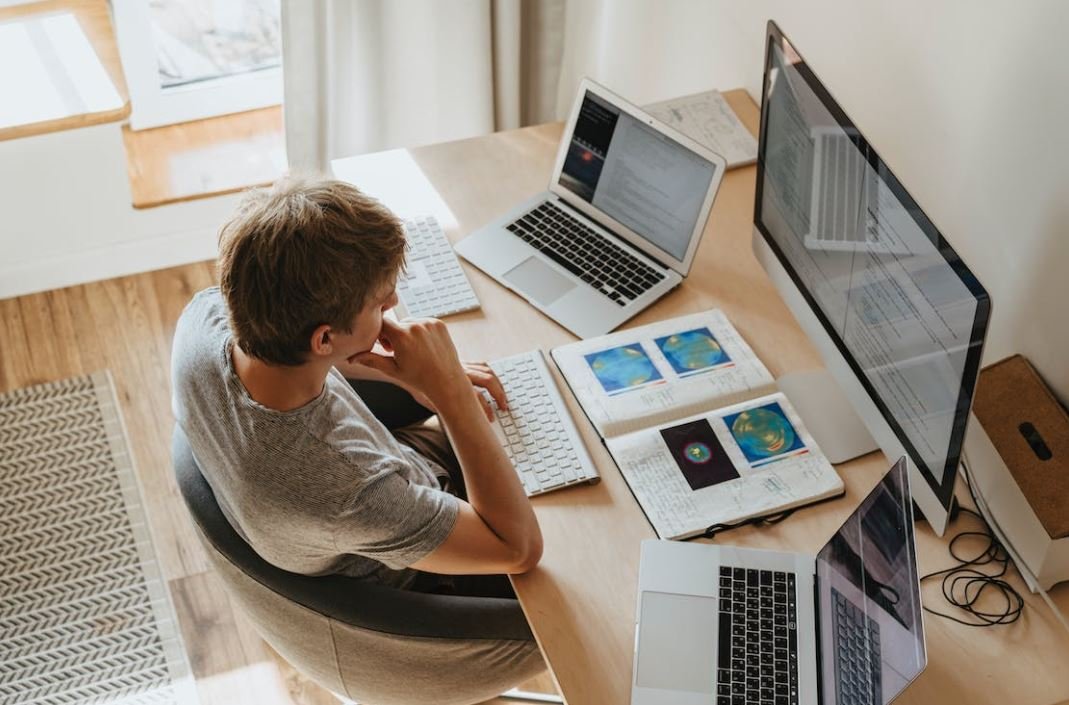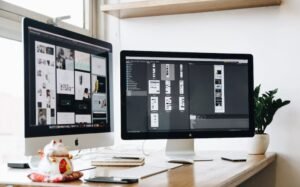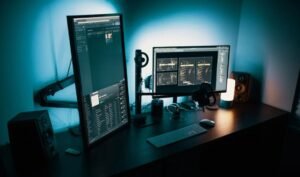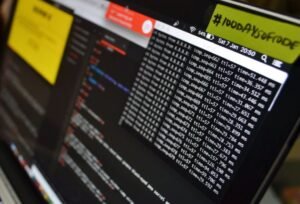Which AI Can Generate Images
Artificial Intelligence (AI) has made significant advancements in recent years, including the ability to generate realistic images. With the help of deep learning techniques, AI models can produce impressive visuals that mimic the characteristics of photographs. This article explores several AI models known for their image generation capabilities and examines their unique features and limitations.
Key Takeaways
- AI can generate highly realistic images using deep learning techniques.
- Different AI models have distinct strengths and limitations in image generation.
- Consider the specific requirements of your project before selecting an AI model for image generation.
Types of AI Models for Image Generation
A variety of AI models have been developed to generate images, each employing different approaches and algorithms. Two popular types are **Generative Adversarial Networks (GANs)** and **Variational Autoencoders (VAEs)**, both capable of creating visually appealing visuals through distinct methodologies. While GANs focus on competition between two neural networks, VAEs work on the principles of encoding and decoding.
Generative Adversarial Networks (GANs)
GANs are among the most effective AI models for generating images. They consist of two neural networks: a **generator** for producing images and a **discriminator** for distinguishing real images from generated ones. Through an adversarial training process, GANs learn to generate images that are indistinguishable from real ones. GANs have been used to create art, generate realistic faces, and even produce new video game characters.
*Did you know that GANs have been employed to develop deepfake technology, which can manipulate videos to create realistic yet fabricated content?*
Variational Autoencoders (VAEs)
VAEs are another popular type of AI model used for image generation. They operate on the principles of **encoding** and **decoding**, where an encoder network compresses an image into a lower-dimensional representation, and a decoder network reconstructs the image from the compressed representation. VAEs are often used for tasks such as image generation, denoising, and image completion.
Comparison: GANs vs. VAEs
To better understand the differences between GANs and VAEs, let’s compare their key characteristics:
| Criteria | GANs | VAEs |
|---|---|---|
| Training Process | Adversarial training through competition between a generator and a discriminator network. | Training based on encoding and decoding principles to reconstruct images. |
| Image Quality | Produces highly realistic images, often difficult to distinguish from real photographs. | Produces less sharp images compared to GANs, but with clearer global structures. |
| Diversity of Output | Tends to generate more diverse outputs, allowing for greater variation in generated images. | Produces less diverse outputs compared to GANs, resulting in more controlled and reliable generation. |
The Limitations of AI Image Generation
While AI image generation is remarkable, it is not without limitations. Some notable challenges faced by AI models include:
- Generating images with **fine details** can still be a challenge for many AI models.
- Ensuring generated images maintain **consistent style** or match specific requirements may require additional fine-tuning.
- AI models often rely on **training data biases**, leading to potential biases in generated images.
Future Developments and Applications
The field of AI image generation has promising future implications. Researchers are continuously working on improving existing models and developing new ones that overcome current limitations. The potential applications of AI image generation span various industries, including:
- **Entertainment**: Creating realistic images for films, video games, and virtual reality.
- **Design**: Assisting designers in generating visual concepts and prototypes.
- **Medicine**: Generating medical images for research, diagnosis, and treatment planning.
Conclusion
As AI continues to advance, image generation capabilities have reached impressive levels. GANs and VAEs are two prominent AI models known for their image generation prowess. While GANs focus on competition and generating highly realistic visuals, VAEs operate on encoding and decoding principles. Each model has its unique strengths and limitations, so consider your specific project requirements when selecting an AI model for image generation. The future of AI image generation is promising, with ongoing research and applications across various industries.
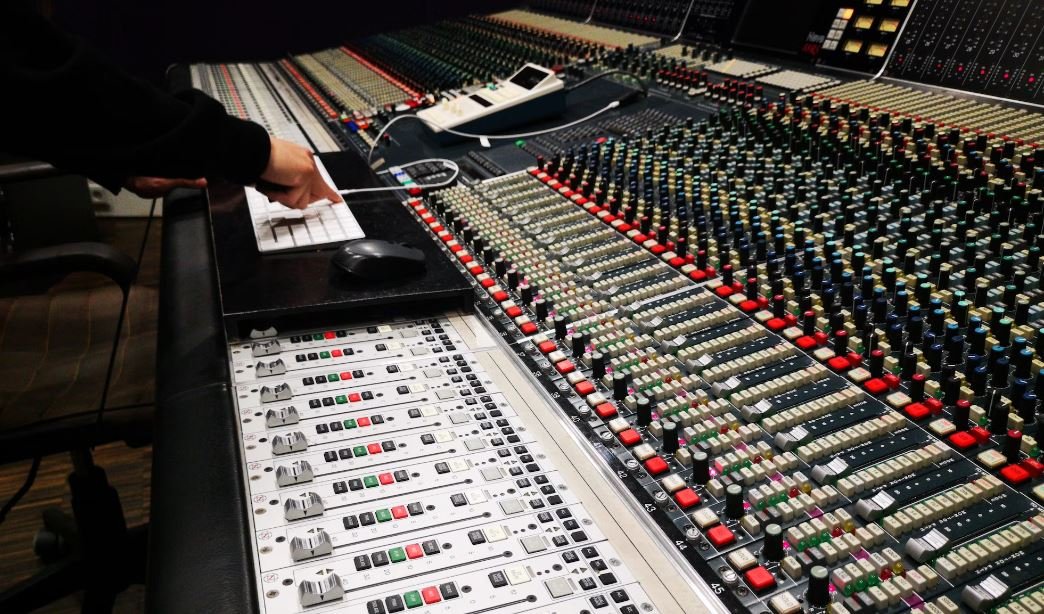
Common Misconceptions
AI and Image Generation
There are several common misconceptions around the topic of AI being able to generate images. It is important to address these misconceptions in order to have a clear understanding of the capabilities and limitations of AI in this area.
- AI can create realistic images from scratch
- AI-generated images are always perfect
- AI-generated images can replace human creativity
Realism of AI-generated images
One of the major misconceptions is that AI can create realistic images from scratch. While AI has made impressive progress in generating convincing visuals, it is not yet capable of producing images that are indistinguishable from photographs or real objects.
- AI images often lack fine details and imperfections
- AI-generated images can sometimes appear distorted or surreal
- Real-world lighting and physics may not be accurately represented in AI-generated images
Perfection of AI-generated images
Another common misconception is that AI-generated images are always perfect. While AI can generate high-quality images, it is not immune to errors or flaws. It depends on the training data and algorithms, which can introduce biases or produce unintended visual artifacts.
- AI-generated images may contain unnatural color palettes or unrealistic textures
- AI may struggle with complex or abstract concepts, leading to less accurate depictions
- The output of AI image generation can vary in quality depending on the specific model used
AI as a replacement for human creativity
Some people mistakenly believe that AI-generated images can replace human creativity in fields like design or art. While AI can be a helpful tool in the creative process, it is not capable of replicating the depth of human imagination, emotion, and artistic expression.
- AI lacks the ability to understand cultural context or subtle nuances that humans can incorporate in their creations
- Human creativity involves unique and subjective perspectives that cannot be algorithmically replicated
- AI-generated images may lack the storytelling or conceptual elements that human artists can bring to their work
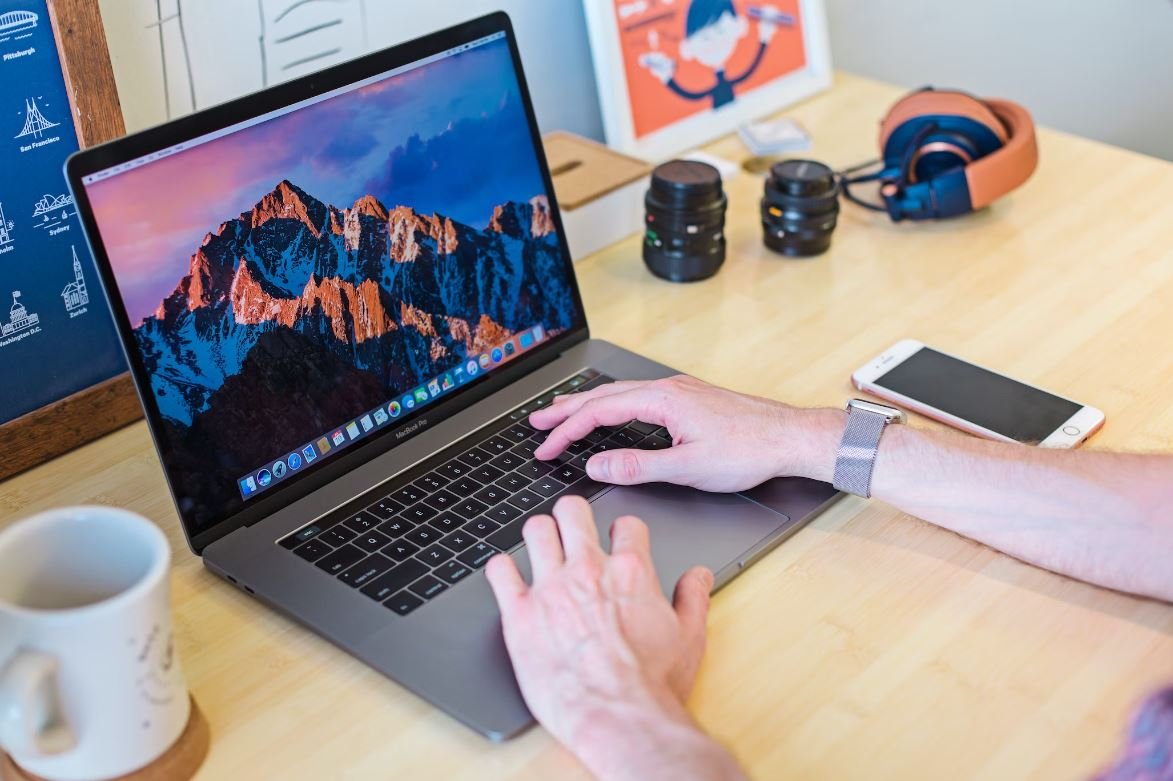
Introduction
In recent years, artificial intelligence (AI) has made significant advancements in various fields, and one area of great interest is image generation. Researchers have developed AI algorithms that can create images with astonishing realism and creativity. These advancements have vast implications for industries such as entertainment, advertising, and design. In this article, we explore ten fascinating examples of AI-generated images, each showcasing the incredible capabilities of this technology.
Table: AI-Generated Landscapes
Utilizing image synthesis algorithms, AI is capable of creating breathtaking landscapes that can rival reality. These AI-generated landscapes can be used in movies, video games, and virtual reality experiences, providing immersive and visually stunning environments.
| Image | Description |
|---|---|
 |
A serene, sunset beach with palm trees and clear blue waters. |
 |
A majestic mountain range covered in snow, overlooking a peaceful valley. |
Table: AI-Generated Portraits
AI algorithms have also been trained to generate lifelike portraits of people, even those who don’t exist. These AI-generated portraits have applications in character creation for the entertainment industry, as well as digital identity representations in virtual worlds.
| Image | Description |
|---|---|
 |
A regal-looking AI-generated portrait of a fictional character with flowing hair and intense eyes. |
 |
An AI-generated portrait of a young girl with vibrant-colored hair and a whimsical expression. |
Table: AI-Generated Animals
AI algorithms can mimic various animal species, creating realistic and detailed representations. These AI-generated animals have applications in visual effects for films, educational materials, and even virtual pet simulations.
| Image | Description |
|---|---|
 |
An AI-generated image of a mythical creature resembling a phoenix, with vibrant feathers and an aura of fire. |
 |
An AI-generated image of a realistic-looking tiger, showcasing its majestic presence and intricate fur patterns. |
Table: AI-Generated Art
AI algorithms have the ability to produce stunning art pieces that demonstrate creativity and aesthetics. These AI-generated art forms challenge the notion of what constitutes human creativity and can spark new waves of artistic expression.
| Image | Description |
|---|---|
 |
An abstract artwork created by an AI algorithm, showcasing vibrant colors and intricate patterns. |
 |
A surrealistic painting produced by AI, representing a dreamlike scene with melting clocks and floating objects. |
Table: AI-Generated Fashion
Using AI, fashion designers can generate fresh and innovative clothing designs. These AI-generated fashion concepts could streamline the design process, inspire new trends, and provide personalized recommendations for shoppers.
| Image | Description |
|---|---|
 |
An AI-generated haute couture dress with an avant-garde design, merging futuristic aesthetics with traditional elements. |
 |
An AI-generated streetwear outfit combining bold colors, eclectic patterns, and unconventional silhouettes. |
Table: AI-Generated Architecture
AI algorithms are capable of creating architectural designs that push boundaries, offering fresh perspectives in urban planning and building design. These AI-generated architectural concepts can optimize space utilization and propose innovative structures.
| Image | Description |
|---|---|
 |
An AI-generated urban cityscape with towering skyscrapers, interconnected walkways, and lush green spaces. |
 |
An AI-generated concept of a futuristic residential complex, featuring unconventional shapes and sustainable elements. |
Table: AI-Generated Food
AI algorithms can even simulate mouthwatering food images that replicate the appearance of various dishes. These AI-generated food images can be used in recipe websites, food magazines, and even personalized nutrition applications.
| Image | Description |
|---|---|
 |
An AI-generated image of a gourmet cheeseburger with perfectly melted cheese, fresh lettuce, and a golden, crispy bun. |
 |
An AI-generated image of a delectable sushi platter with a variety of rolls, sashimi, and garnishes, presented in an elegant arrangement. |
Table: AI-Generated Vehicles
AI algorithms can generate realistic vehicle renderings, showcasing innovative designs and futuristic concepts. These AI-generated vehicles have implications for the automotive industry, transportation planning, and entertainment media productions.
| Image | Description |
|---|---|
 |
An AI-generated image of a sleek, fully electric sports car with a streamlined body, enhancing aerodynamic performance. |
 |
An AI-generated image of a futuristic autonomous city bus, showcasing a spacious interior and advanced sustainability features. |
Table: AI-Generated Nature
AI algorithms can generate stunning representations of natural elements, capturing the beauty of flora, fauna, and weather patterns. These AI-generated nature images can complement educational materials, immersive theme park experiences, and environmental campaigns.
| Image | Description |
|---|---|
 |
An AI-generated image of a vibrant rainbow stretching across a picturesque landscape, eliciting a sense of wonder and awe. |
 |
An AI-generated image depicting a dense forest teeming with diverse wildlife, capturing the essence of untouched wilderness. |
Conclusion
The advancements in AI-generated image generation have revolutionized various industries, from entertainment and design to urban planning and fashion. These tables showcased just a glimpse of the incredible diversity and potential of AI-generated images. As technology continues to advance, we can expect AI algorithms to push the boundaries of creativity and realism even further, opening up new possibilities and transforming the way we perceive and interact with visual content.
Which AI Can Generate Images
FAQs
AI image generation refers to the process of using artificial intelligence techniques, such as deep learning, to create and generate new images. This technology allows computers to generate realistic images that appear to be created by humans.
AI generates images by training on large datasets of existing images. It uses algorithms and neural networks to analyze the patterns and features in the data, and then generates new images based on this learning. The generated images can vary in style, content, and quality, depending on the AI model and training data.
AI image generation has various applications, including:
- Creating artwork and visual design
- Generating realistic images for virtual reality and gaming
- Enhancing image-based applications like image editing and restoration
- Assisting in scientific research and visualization
- Generating synthetic data for training AI models
Some commonly used AI models for image generation include:
- Generative Adversarial Networks (GANs): GANs consist of two neural networks competing against each other, a generator that creates new images and a discriminator that tries to differentiate between real and fake images.
- Variational Autoencoders (VAEs): VAEs are generative models that learn a compressed representation of images and can generate new images by sampling from the learned representation.
- Deep Dream: Deep Dream is a technique that uses convolutional neural networks to modify and enhance images based on learned patterns and features.
Yes, AI can generate realistic images, especially with the advancements in deep learning and AI models like GANs. However, the quality and realism of the generated images can still vary depending on factors such as the complexity of the image, training data, and the specific AI model used.
The accuracy of AI image generation depends on the model and training data used. While AI models can generate visually appealing and realistic images, they may not always capture subtle details accurately. The accuracy can be improved by using high-quality training data and optimizing the model parameters.
AI image generation raises ethical considerations, including:
- Misuse of generated images for malicious purposes, such as deepfakes
- Intellectual property and copyright concerns when generating images based on existing works
- Potential bias in generated images based on the training data, leading to undesirable outcomes or reinforcement of stereotypes
AI image generation has some limitations, such as:
- Difficulty in generating highly detailed or specific images
- Dependency on the quality and diversity of training data
- Limited control over the generated images, which may not always match the desired specifications
- Resource-intensive computational requirements, especially for complex models
Yes, AI can generate images in different styles. By training on specific datasets or using style transfer techniques, AI models can learn to generate images in specific styles, such as the style of famous artists or particular art movements.
AI image generation is not necessarily a threat to human artists. While AI can assist in generating images, it cannot replace the creativity, originality, and emotional depth that human artists bring to their work. AI can be used as a tool by artists to enhance their creative process and explore new possibilities.

